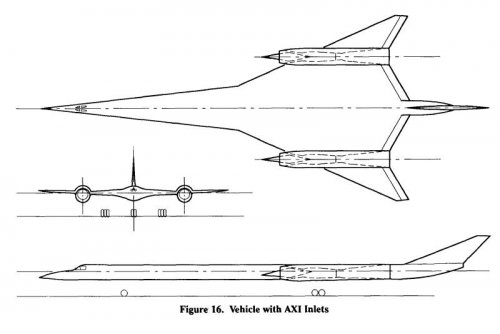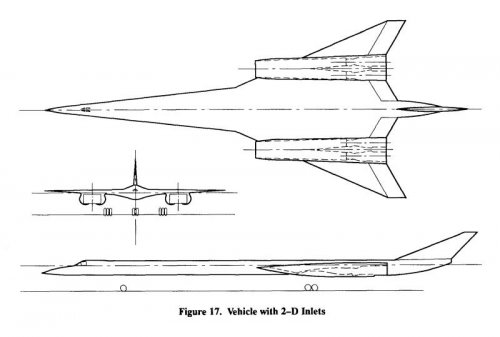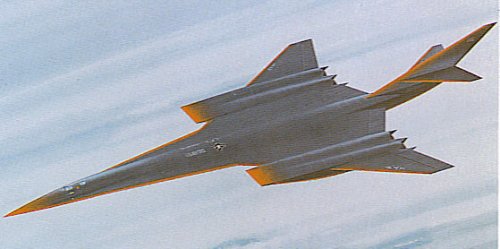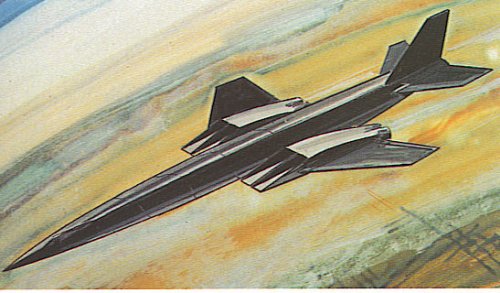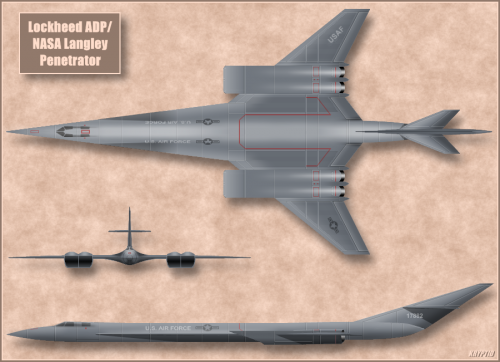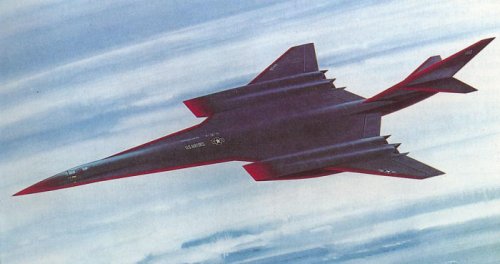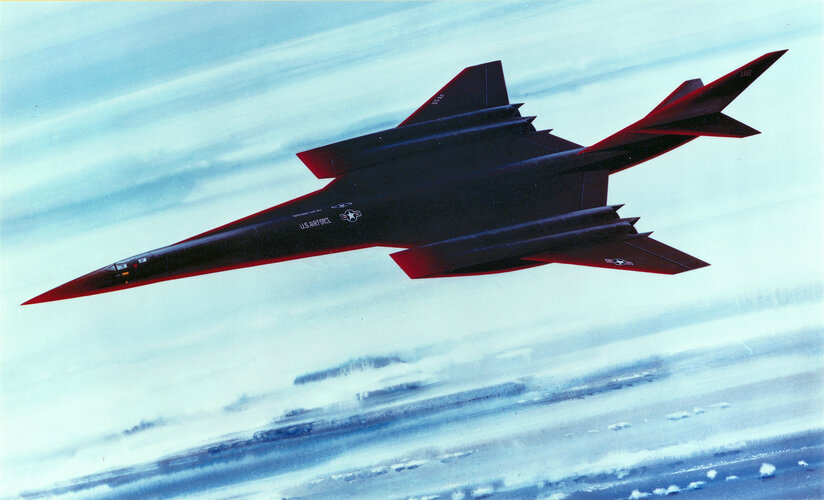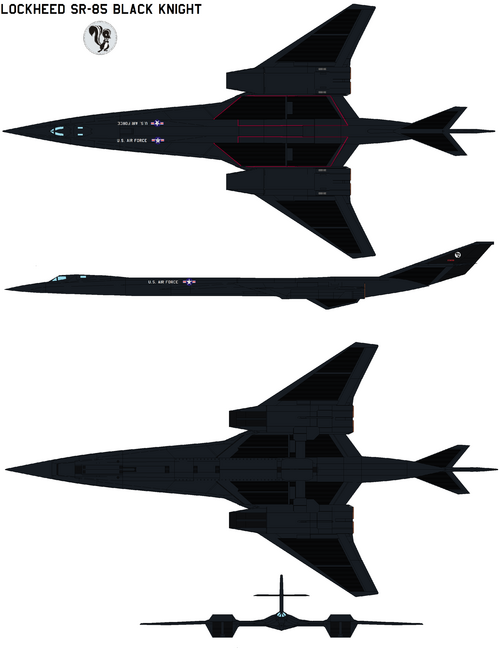- Joined
- 1 April 2006
- Messages
- 11,374
- Reaction score
- 10,200
AlAA 90-2151
Airframe/Propulsion Integration of Supersonic Cruise Vehicles
J. Anderson
Lockheed Advanced Development Projects
Burbank, CA
"...A system performance study was conducted by the Lockheed Advanced Development Projects (ADP) organization under a subcontract to Pratt & Whitney in support of the Air Force Enhanced Flow Compressor contract. This study investigated the system performance, impacts of the inlet/lengine match and the implications of engine flow scheduling vs Mach number.
The baseline aircraft used in the study was a derivative of the Mach 5 methane fueled cruise vehicle developed in a joint effort between ADP and NASA Langley - (pics 3 and 4 - Flateric). The derivative aircraft was a Mach 4, JP fueled aircraft. Both aircraft were designed for long range cruise at their respective design Mach numbers. The baseline aircraft was configured with propulsion
nacelles located on the wings. For this study, these nacelles were removed from the aircraft design and replaced with the various new inletlengine combinations being studied."
Airframe/Propulsion Integration of Supersonic Cruise Vehicles
J. Anderson
Lockheed Advanced Development Projects
Burbank, CA
"...A system performance study was conducted by the Lockheed Advanced Development Projects (ADP) organization under a subcontract to Pratt & Whitney in support of the Air Force Enhanced Flow Compressor contract. This study investigated the system performance, impacts of the inlet/lengine match and the implications of engine flow scheduling vs Mach number.
The baseline aircraft used in the study was a derivative of the Mach 5 methane fueled cruise vehicle developed in a joint effort between ADP and NASA Langley - (pics 3 and 4 - Flateric). The derivative aircraft was a Mach 4, JP fueled aircraft. Both aircraft were designed for long range cruise at their respective design Mach numbers. The baseline aircraft was configured with propulsion
nacelles located on the wings. For this study, these nacelles were removed from the aircraft design and replaced with the various new inletlengine combinations being studied."

